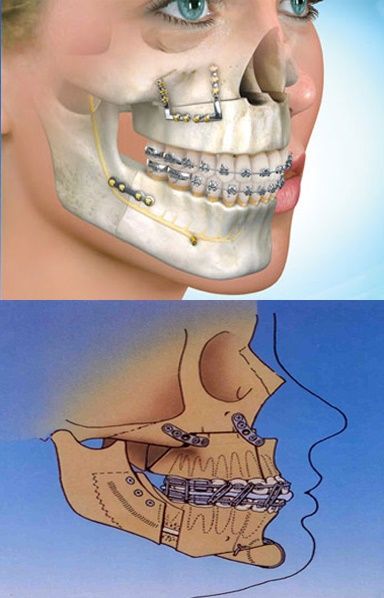
The operation itself repositions the teeth and jawbones into a new position, ensuring a more pleasing appearance, a healthy smile and optimal functionality of the dentofacial system. The term "orthognathic" derives from the Greek language and consists of two words: "ortho" meaning "to straighten" and "gnathic" meaning "jaw" (jaw bone).
Why do we need to correct a faulty occlusion?
Malocclusions or defective occlusions can cause a range of functional problems, from an inability to chew food properly, which can compromise the digestion process, to speech problems, and other facial dysfunctions found in chronic headaches, joint pain and periodontal trauma. Sleep apnoea is also a problem that can be treated with orthognathic surgery.
People who may benefit from orthognathic surgery are those who suffer from a defective occlusion (malocclusion) or whose jaw or mandible bones are incorrectly positioned. The growth of the two arches is a gradual process, and sometimes the mandible can grow faster than the jaw. Accidents or birth defects can also affect the alignment of the facial bones. Orthodontics can only correct malocclusions if the teeth are incorrectly positioned, but if it is a question of repositioning the arch bones, then orthognathic surgery is needed.
The following issues need to be assessed
- Difficulty chewing food, occluding or swallowing food
- Speech problems
- Chronic temporomandibular joint pain (TMJ)
- Open occlusion
- Mandibular or maxillary prognathism
- Breathing problems
- Retraction of the mandible
Before orthognathic surgery can take place, the patient will need orthodontic treatment or braces. This will allow the teeth to be aligned in a position that allows the jaw bones to become more stable following orthognathic surgery. Normally, the patient needs orthodontic treatment for one or two years to "decompress" the teeth before orthognathic reconstruction surgery. Tooth extractions are also done before the operation.
Three treatment goals are fundamental in orthognathic surgery: functionality, aesthetics, and stability. These three objectives are the main goals in treating patients with dentomaxillary anomalies.
Stages of surgical-orthodontic treatment
- Pre-operative orthodontic stage (9-18 months). Teeth are aligned in optimal position on each dental arch.
- Surgical stage and healing period (4-6 weeks). The surgeon intraoperatively positions the jaws in the most favourable interrelationship to achieve correct occlusion and balanced facial proportions.
- Post-operative orthodontic stage for occlusal completion. This stage takes place after the healing period and involves minor tooth movements to achieve a satisfactory occlusion.
- Retention stage. After completion of orthodontic treatment, retention devices are applied to stabilise the teeth in their new position.
 RO
RO  EN
EN 